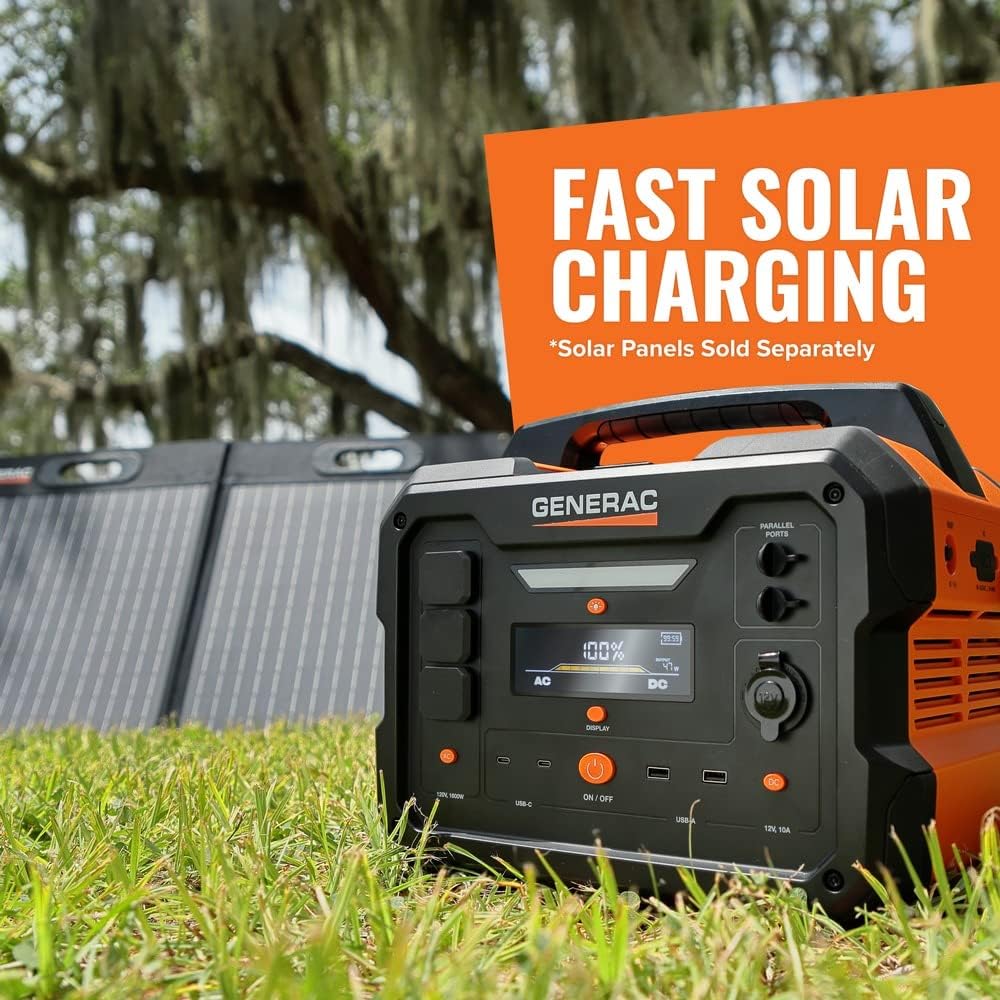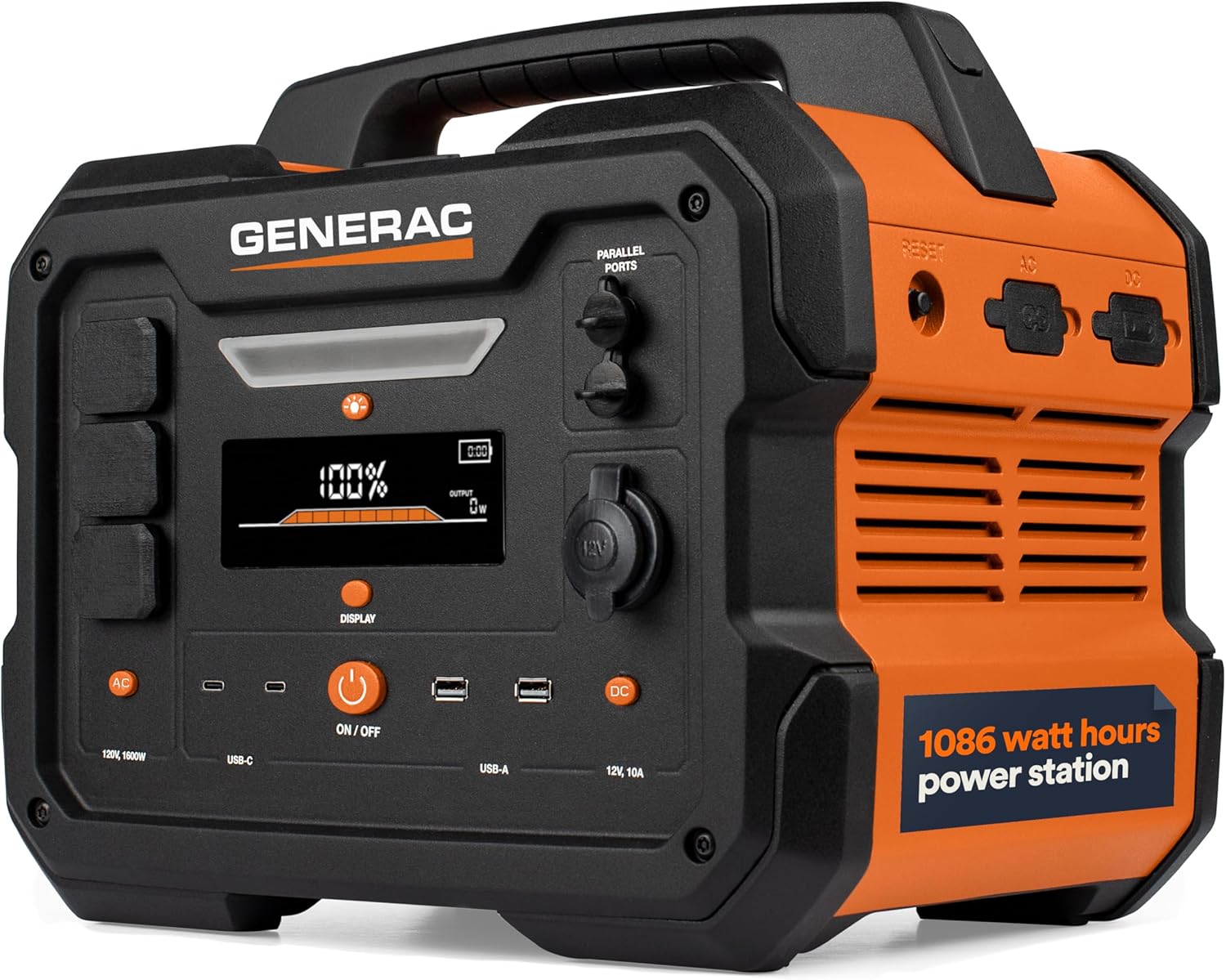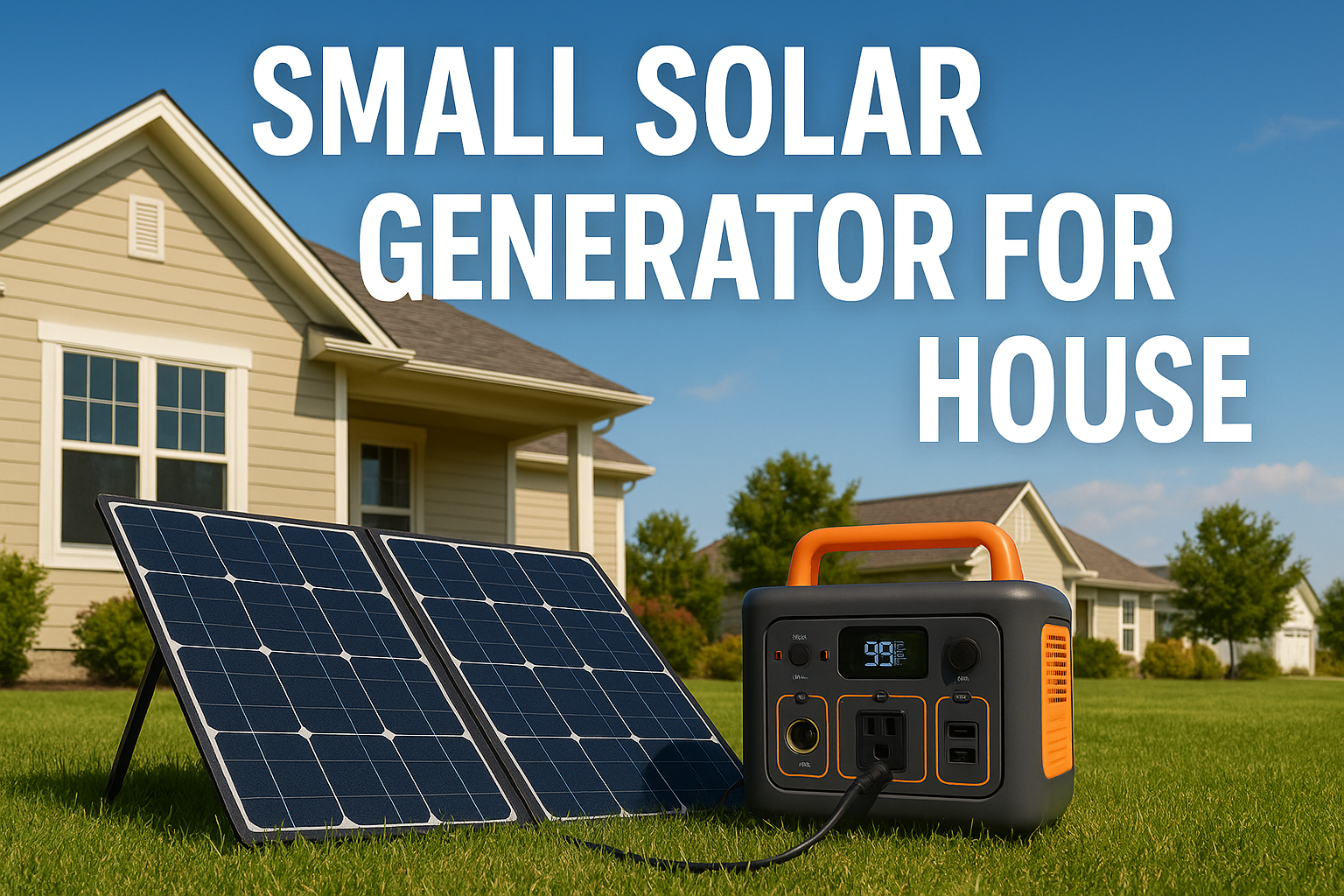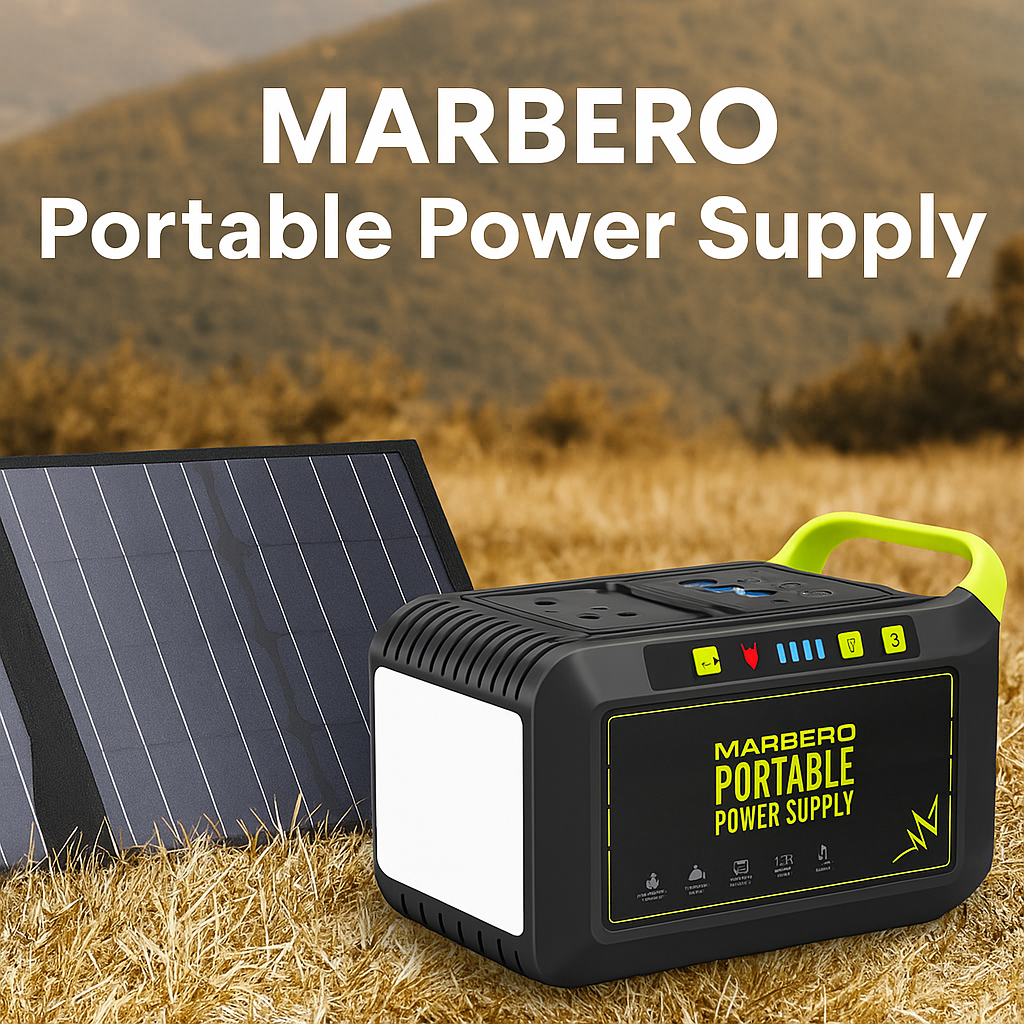Introduction
Power outages are no longer rare events. From rolling blackouts to unexpected storms, millions of homeowners face the frustration of being left in the dark. That’s why solar backup generators are becoming essential. They don’t just keep the lights on—they provide energy independence and help cut down electricity costs.
When it comes to backup power, Generac is a brand most people recognize. Known for its traditional gas standby generators, Generac has stepped into the clean energy market with its solar backup generator system, the Generac PWRcell.
But how good is it really? In this in-depth review, we’ll cover everything you need to know about the Generac solar backup generator—from features and specs to real-world performance, pricing, and comparisons with competitors. By the end, you’ll know if this system fits your home’s energy needs.
What Exactly Is a Generac Solar Backup Generator?
Unlike a fuel-powered generator, a Generac solar backup generator uses solar energy plus battery storage to keep your home powered. The system revolves around the Generac PWRcell battery, which stores solar energy for use during outages or when grid power is expensive.
The main components are:
- Solar panels – collect and convert sunlight into electricity.
- PWRcell battery – stores energy for later use.
- Inverter – converts DC power into AC power your home appliances can use.
- Transfer switch – allows seamless switching from grid to backup power.
This setup transforms your home into a mini power plant. During the day, solar panels generate power, and any extra goes into the battery. When the grid goes down or prices spike, the battery automatically takes over.
Key Features of the Generac Solar Backup Generator
Generac designed the PWRcell system with flexibility and resilience in mind. Here are its standout features:
1. Modular Battery Design
The PWRcell battery starts at 9 kWh capacity but can expand up to 18 kWh per cabinet. With multiple cabinets, you can scale up to 36 kWh, enough to power large homes.
2. Whole-Home Power Capabilities
With up to 9 kW continuous output and 12 kW surge power, the PWRcell can handle refrigerators, sump pumps, Wi-Fi, lights, and even central air in some cases.
3. Seamless Automatic Backup
Unlike portable generators that require manual start-up, the Generac system automatically switches to backup mode during an outage—without a single flicker in your lights.
4. Smart Energy Monitoring
The Generac PWRview app lets you track energy usage, solar production, and battery status in real time. You can even schedule usage to reduce peak-hour costs.
5. Durable, Weather-Resistant Build
Built for both indoor and outdoor installation, the system’s components are designed to withstand harsh weather conditions.

Generac PWRcell Specifications
Here’s a closer look at the technical side of the Generac solar backup system:
| Feature | Details |
|---|---|
| Battery Type | Lithium-ion (NMC) |
| Usable Capacity | 9 kWh – 18 kWh per cabinet |
| Scalability | Up to 36 kWh with multiple units |
| Continuous Power Output | 9 kW |
| Surge Power | 12 kW |
| Efficiency | ~96% round-trip |
| Monitoring | PWRview app |
| Warranty | 10 years (or 7.56 MWh throughput) |
| Installation | Indoor/outdoor, certified installer required |
How the Generac Solar Backup Generator Works
The system follows a simple process:
- Daytime Solar Production – Panels generate electricity.
- Battery Storage – Extra power charges the PWRcell.
- Normal Use – Your home runs on solar first, then pulls from the grid.
- Outage Mode – If the grid fails, the PWRcell instantly supplies backup power.
- Smart Load Prioritization – The system ensures critical appliances stay on.
This approach helps you save money on utility bills while protecting your home from outages.
Performance: How Well Does It Work?
The Generac solar battery backup is engineered for reliability. In testing and real-world use, the PWRcell shows:
- Seamless transitions between grid and battery.
- Enough power to keep critical appliances running.
- Expandable capacity, which makes it future-proof.
- Ability to lower electric bills by reducing peak-time grid reliance.
However, it’s worth noting that a single 9 kWh system won’t run an entire large home overnight. For whole-home coverage, most households need multiple batteries.
Installation Process
Installing a Generac PWRcell system requires a certified installer. The process usually includes:
- Energy audit of your home.
- System design based on power needs.
- Permitting and approvals from local utilities.
- Installation (typically 1–3 days).
- Activation and app setup.
Professional installation ensures warranty coverage and system efficiency.
Cost of Generac Solar Backup Generators
The cost depends on system size, installation, and location. On average:
- 9 kWh PWRcell battery system: $9,500 – $11,000
- 18 kWh system: $17,000 – $20,000
- Complete solar + storage package: $20,000 – $30,000+
- Installation: $2,000 – $5,000
The good news: you may qualify for the 30% federal solar tax credit plus local rebates, which can significantly reduce costs.
Pros and Cons
✅ Pros
- Scalable battery storage (9–36 kWh).
- Seamless automatic backup during outages.
- Strong 9 kW continuous output.
- Reduces electricity bills with smart energy use.
- Durable, weather-resistant design.
- Trusted Generac brand with a 10-year warranty.
❌ Cons
- High upfront cost.
- Installation required (not DIY).
- May need multiple batteries for large homes.
- Stationary system (not portable).
Generac vs Other Solar Backup Systems
Generac PWRcell vs Tesla Powerwall
- Tesla Powerwall: 13.5 kWh per unit, stackable, popular brand appeal.
- Generac PWRcell: Modular design, higher scalability, more flexible installation.
- Verdict: Tesla offers sleek design, while Generac offers more expansion options.
Generac PWRcell vs EcoFlow Delta Pro
- EcoFlow Delta Pro: Portable, less expensive, good for RVs.
- Generac PWRcell: Permanent, higher power, whole-home focus.
- Verdict: Choose EcoFlow for mobility, Generac for full-house reliability.
Generac PWRcell vs Bluetti AC300
- Bluetti AC300: Portable, expandable, better for small-scale backup.
- Generac PWRcell: Grid-tied, whole-home solution, integrates seamlessly with solar.
- Verdict: Bluetti is budget-friendly, Generac is future-proof for large homes.
Real-World Applications
- Storm Preparedness – Families in hurricane-prone areas use PWRcell to keep essentials running.
- Bill Reduction – Homeowners in California save money by avoiding high evening rates.
- Remote Homes – Cabins and off-grid properties use Generac systems for independence.
- Medical Equipment – Critical for households that depend on medical devices like oxygen machines.
Maintenance and Warranty
Generac PWRcell requires minimal maintenance compared to fuel-powered generators. No oil changes, no refueling, no noise.
- Warranty: 10 years or 7.56 MWh throughput.
- Covers parts and performance if installed by certified professionals.
Is the Generac Solar Backup Generator Worth It?
If you want:
- Reliable home backup during outages,
- Lower electricity bills,
- Expandable solar battery storage,
- And a trusted brand name,
Then yes—the Generac PWRcell solar backup generator is worth it.
It may not be the cheapest option, but for homeowners who value long-term security and sustainability, it’s a smart investment.
FAQs
1. How long does the PWRcell battery last?
Typically 10–15 years, depending on usage.
2. Can it power my whole house?
Yes, with multiple battery units. A single unit may only cover essentials.
3. Is it compatible with existing solar panels?
Yes, in most cases. An installer can confirm compatibility.
4. Does Generac offer portable solar generators?
No, Generac focuses on permanent whole-home systems.
5. What’s the warranty?
10 years or 7.56 MWh throughput.
Conclusion
The Generac Solar Backup Generator (PWRcell system) combines solar energy, battery storage, and smart management into a complete home backup solution. With its modular capacity, seamless transfer, and high power output, it offers peace of mind during outages while helping you save on electricity bills.
Though the upfront cost is significant, federal tax credits and long-term savings make it a strong choice for homeowners serious about energy independence.
If you’re ready to protect your home and embrace clean energy, the Generac solar backup generator is one of the most reliable options on the market today.




